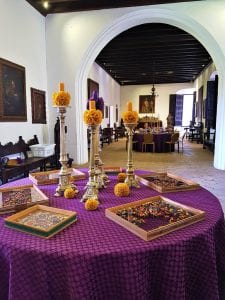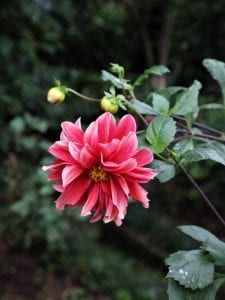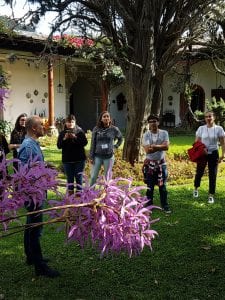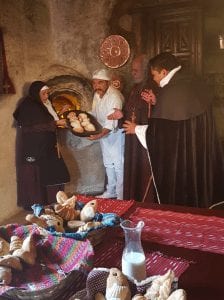History of Casa Popenoe
The story of Casa Popenoe is intertwined with many other stories, all of which contribute to the history of this unique residence. For example, the story of the relocation of the capital city of Guatemala from Antigua to what is now Guatemala City; the impact that earthquakes have had on Guatemalan architecture; the role of foreigners in preserving colonial architecture as cultural heritage; and the vision of one man and his wife to undertake the titanic restoration of this property... The following timeline allows us to understand more how all these stories are interwoven in the history of Casa Popenoe and what were the most significant events.
-
1543
The city of Santiago de los Caballeros de Guatemala is founded in the Panchoy Valley. This is the third relocation of the capital city.
-
1560
Jacomé de Piña builds a house on the lot currently occupied by Casa Popenoe.
-
1570
Diego de Jacomé, Jacomé de Piña’s son, is living in the house.
-
1615
The Jacomé de Piña house no longer exists. The new owner of the lot is Isabel Girón.
-
1650
Juan Torres, ”Presbítero Sacristán Mayor” of the Cathedral of the city of Santiago de los Caballeros de Guatemala, builds a new house on the lot. Certain parts of that house are still present.
-
1661
The house is occupied by Petronila de Bizuela y Espés.
-
1667
Nicolás de Estrada buys the house after the death of Petronila de Bizuela y Espés.
-
1676
Francisca and Teresa de Estrada inherit the house from their brother Nicolás.
-
1723
After the death of the Estrada sisters, the house is bought by Bernabé de Sotomayor.
-
1746
Manuela de Ayala buys the house from Bernabé de Sotomayor.
-
1762
Venancia López Marchán de la Rosa, a merchant from Campeche, México and the wife of Andrés Guerra Gutiérrez, a soldier (rank unknown) from Cáceres, Spain, buys the house from Manuela de Ayala and renovates the property; this results in the current form of the house. Andrés Guerra was the Scribe of the Chamber and “Mayor de Gobierno y Guerra”, a role that gave him significant political influence.
-
1773
Due to the Santa Marta earthquake, the house suffers considerable damage. As a result, the Guerra-López family moves to the new capital, Nueva Guatemala de la Asunción, where Andrés continues working as a Scribe until at least 1781. The house remains in very bad condition.
-
1850
A Capuchino Cypress tree is planted in the main patio and soon the house becomes known as the “House of the Capuchino.”
-
1916
Frederick Wilson Popenoe, born in Topeka, Kansas in 1892 and an employee of the US Department of Agriculture, arrives in Guatemala in search of avocados.
-
1917–1918
From the months of December 1917 to January 1918, devastating earthquakes causes widespread damage throughout the country.
-
1918–1925
Wilson Popenoe travels throughout Central America and some South American countries looking for high quality avocados. He settles in Honduras with his family.
-
1925
The United Fruit Company hires Wilson Popenoe to create experimental farms in Latin America.
-
1926
Ciriaco Peralta inherits the house from Gregoria Ruiz, Jose Maria Ruiz’ daughter.
-
1930
Wilson Popenoe and his wife Dorothy Hughes (born in 1899 in Ashford, Middlesex, England) buy the house in Antigua that will later be known by his surname. The house deteriorated significantly since 1871. They begin the restoration of the house. Dorothy and their five children take up residence in Guatemala City. Wilson continues to work in Honduras.
-
1930–1932
Dorothy, who was passionately interested in botany, archeology and art, dedicates herself to the restoration of the house, following archaeological guidelines in order to recuperate the original aspect of the property (during colonial times), as much as possible.
-
1932
While visiting her husband in Tela, Honduras, Dorothy Popenoe dies at the tender age of 33, and never sees a completed version of the house.
-
1932–1936
Wilson Popenoe continues the restoration of the house with the help of his friend Mildred Palmer (owner of the Casa de las Campanas, the second residence restored in Antigua Guatemala). In 1936 the avocado tree is planted in the main garden of the house; and it still bears fruit today.
-
1938
Wilson receives a group of visitors in the house. Among them is the art historian Helen Barsaloux (Chicago, 1904), whom he marries at the end of the year.
-
1939–1961
Helen continues to collect religious objects, many of them purchased from churches, including furniture, paintings, sculptures and decorative objects of the colonial period, none of which were originally in the house. This started the trend, which still exists in Antigua, of decorating private homes with religious objects.
-
1943
Wilson Popenoe buys a house in ruins located on 6th Street, and the back gardens of some houses on 1st Avenue (directly behind Casa Popenoe), in order to join the two properties. On the new property he builds a colonial style apartment, without following the rigorous archeological principles that he used to restore the historic house.
-
1957
Wilson retires and moves permanently to Guatemala. He builds a modern bathroom for his wife Helen and installs electricity in the whole house.
-
1961
Helen dies in Antigua at the age of 57.
-
1969
Wilson marries Alice Weiss (Switzerland circa 1900, resident of Tegucigalpa), an old friend of the family. Alice builds a modern kitchen in the historic house.
-
1975
Wilson Popenoe dies at the age of 83 in Antigua, Guatemala and is buried in the San Lazaro Cemetery.
-
2007
The descendants of Wilson and Dorothy Popenoe continue to live in the house until Marion and Hugh Popenoe, two of their children, donate the property and most of the furniture and objects, to Universidad Francisco Marroquín.
-
2008
The house on 6th Street, that had been acquired by Wilson in 1943, is remodeled to create the “Sitio Escolástico”, a modern conference space for academic activities.
-
2013
The gardens are restored according to Wilson Popenoe’s original plans. Various research about the history of the house are made, and academic events are frequently held in Casa Popenoe.
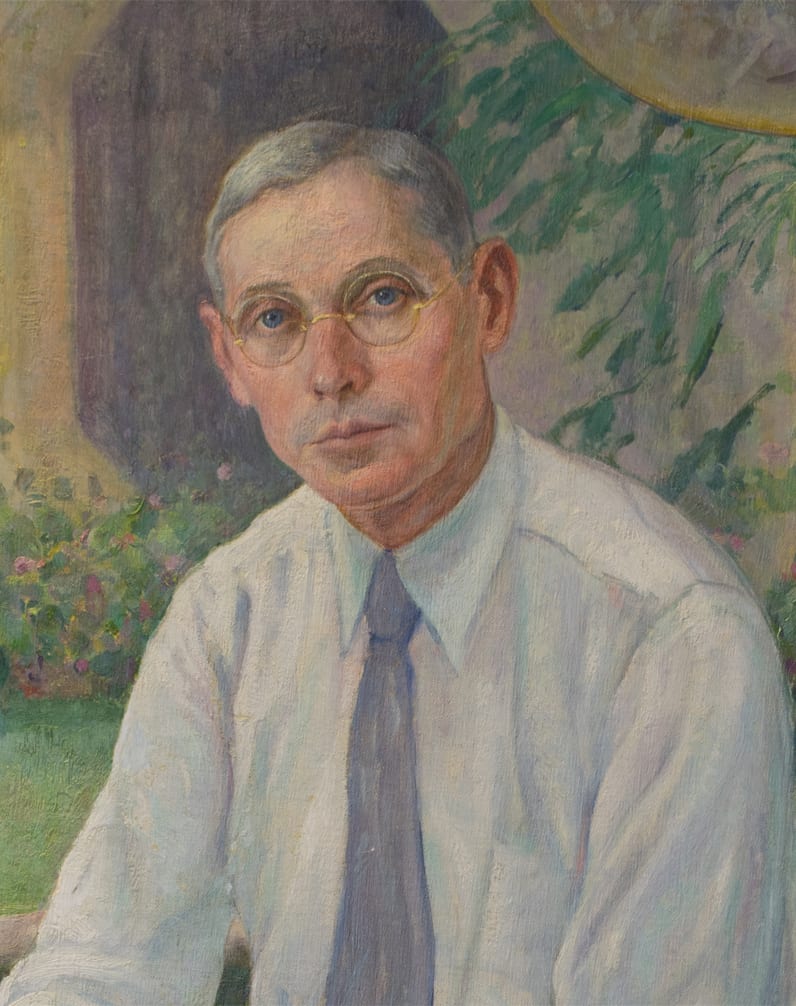
FREDERICK WILSON POPENOE
American botanist, agronomist and professor
Born March 9, 1892 in Topeka, Kansas
Died June 20, 1975 in Antigua, Guatemala
“For more than twelve years Wilson Popenoe traveled through Central America. His path took him up and down, crossing valleys and scaling mountains, in heat and in cold, almost always alone, searching for avocados, citrus and other valuable fruits. He left his signature deeply engraved in our horticulture, but he did more than that. Popenoe was a United States Ambassador of goodwill in Latin America. He traced paths that others could follow more easily because he had already been there. He left his mark inspiring the lives of many students who had the good fortune to know him and this was his major contribution, because Popenoe knew that people come first and are worth more than plants.”
Knowles Ryerson, from Frederic Rosengarten, Jr.'s book:
“Wilson Popenoe: Agricultural Explorer, Educator, and Friend of Latin America”
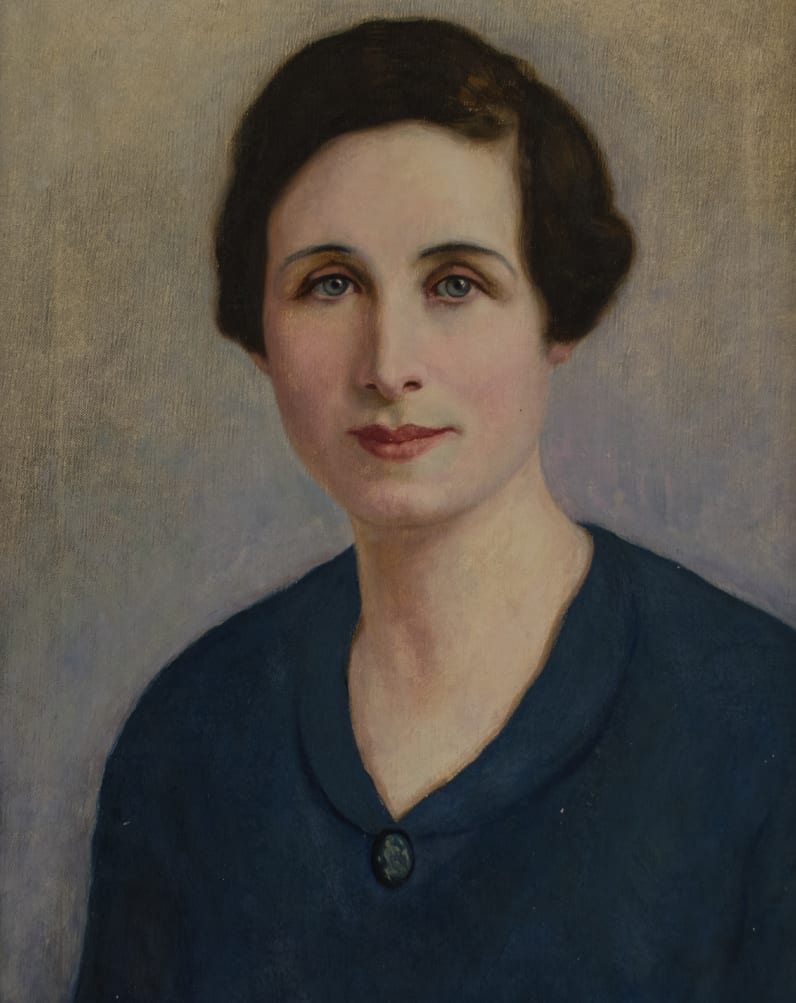
DOROTHY HUGHES POPENOE
British archaeologist and botanist
Born June 18, 1899 in Ashford, Middlesex, England
Died December 30, 1932 in Tela, Honduras
“Her attitude and her approach to the reconstruction of her ruined house were identical to what led her to become a successful botanist and archaeologist, wife and mother, an aficionada of meteorology, a writer and an artist of both brush and ink. She confronted her ruined house as she confronted any other problem. Her idea was simple: create order where there was chaos. This maxim deeply influenced her. She would develop a plan, a method, or a system and then carry it out simply and directly, with patience and efficiency.”
Louis Adamic: “The House in Antigua”



